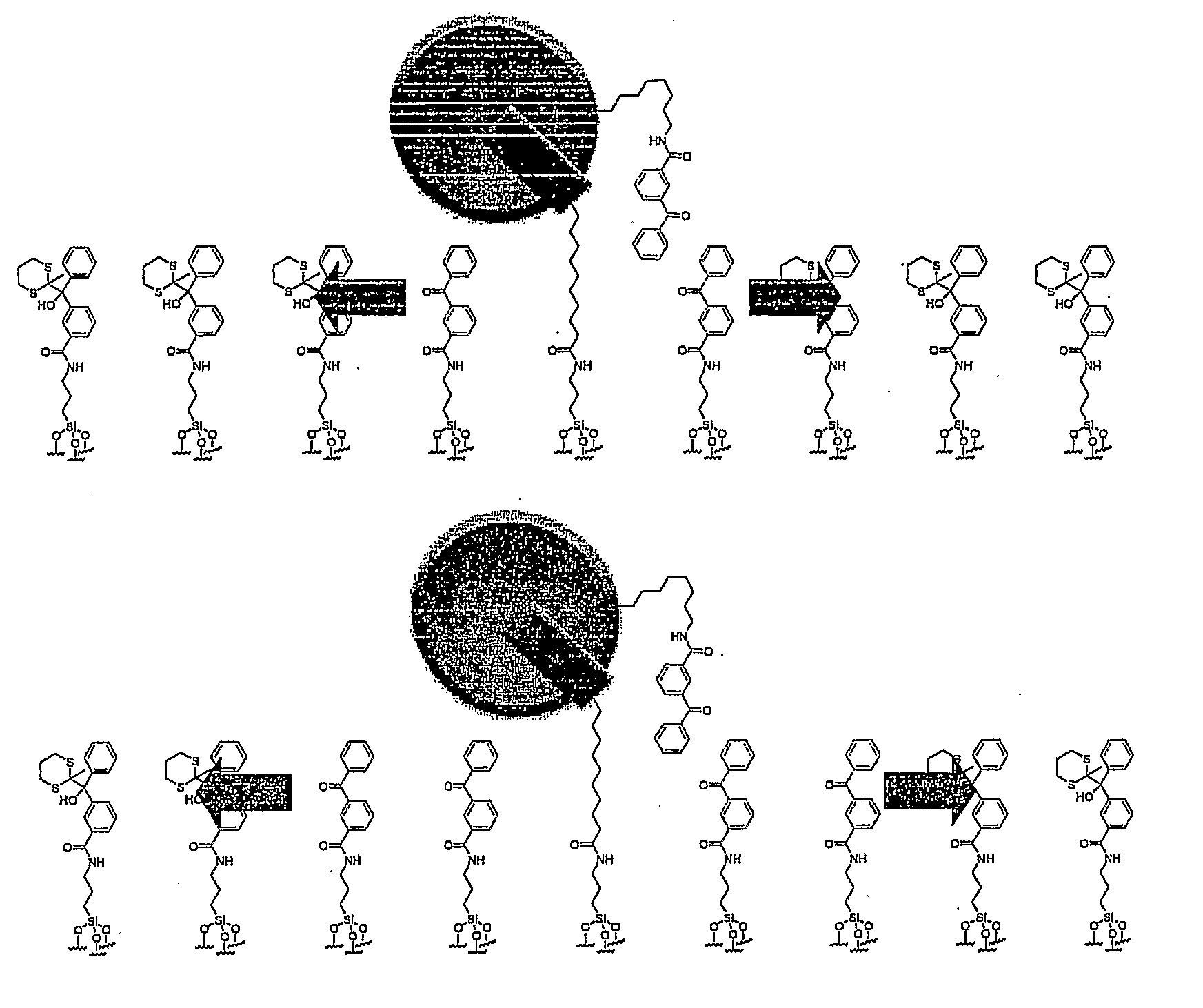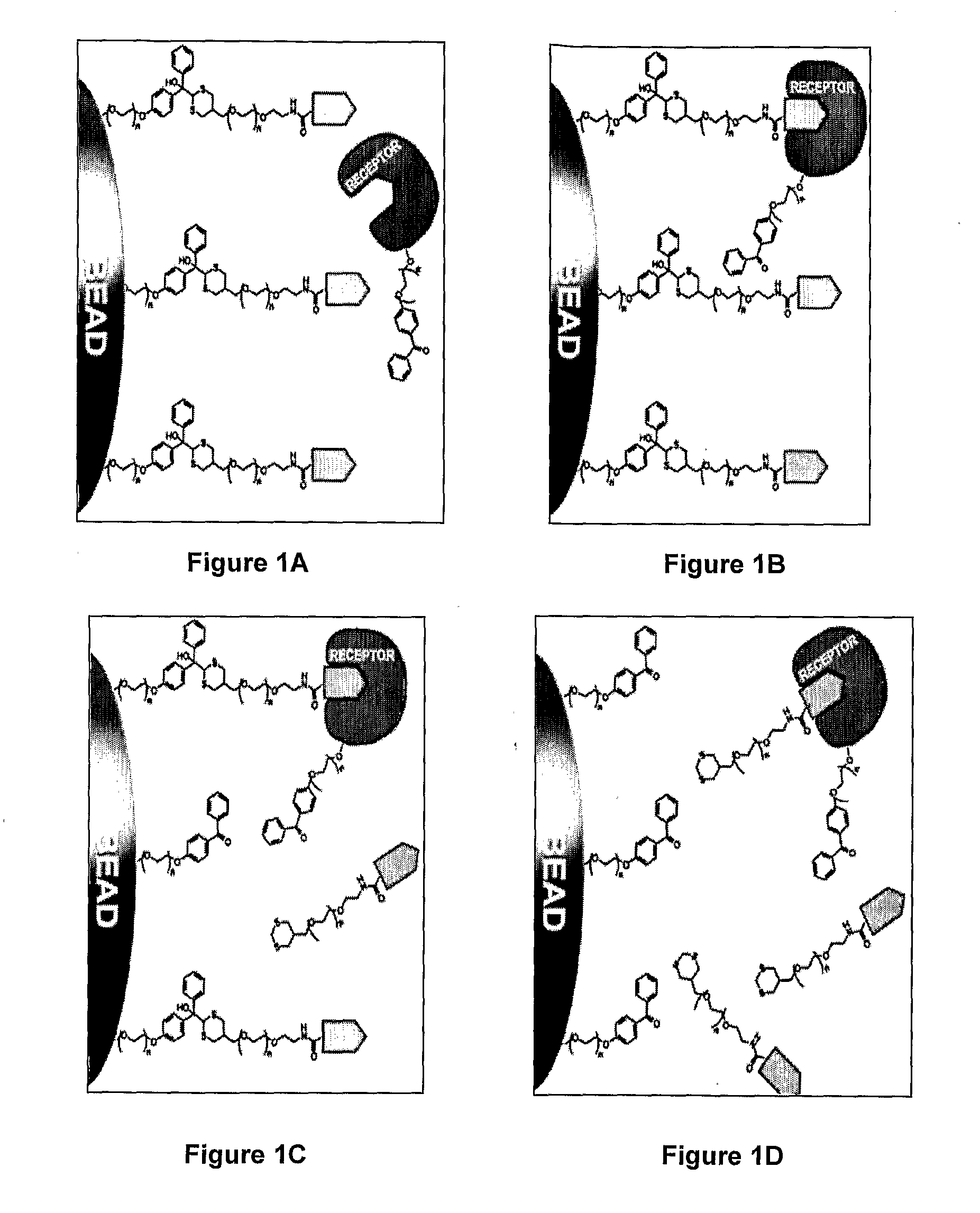Photoinduced Signal Amplification Through Externally Sensitized Photofragmentation in Masked Photosensitizers
a technology of photofragmentation and photoinduced signal, which is applied in the field of photoinduced signal amplification through external sensitization of photofragmentation in masked photosensitizers, can solve the problems of difficulty in isolating targeted compounds, current methods used to study small quantities of materials suffer, and the singlet oxygen method is the free diffusion of singlet oxygen
- Summary
- Abstract
- Description
- Claims
- Application Information
AI Technical Summary
Benefits of technology
Problems solved by technology
Method used
Image
Examples
Embodiment Construction
[0025]The invention is further described by the following non-limiting description.
[0026]The photoinduced fragmentation reaction can occur as a result of a single photon absorption or two photon absorption. The actual wavelength value used depends on the difference of the UV / vis (or near-IR for the two photon cases) absorption maximum of the photosensitizer and the masked photosensitizer. An excitation wavelength in the range that the unmasked photosensitizer absorbs and masked photosensitizer does not absorb to a great extent, is used to prevent exciting the masked photosensitizer and creating competing reactions. For example, substituted benzophenones that absorb light around 350-370 nm can be selectively excited in the presence of the masked photosensitizers, because the masked photosensitizers have absorption maxima below 300 nm.
[0027]The actual amplification efficiency depends on the ratio of the extinction coefficients of the free photosensitizer and its masked form. For examp...
PUM
 Login to View More
Login to View More Abstract
Description
Claims
Application Information
 Login to View More
Login to View More - R&D
- Intellectual Property
- Life Sciences
- Materials
- Tech Scout
- Unparalleled Data Quality
- Higher Quality Content
- 60% Fewer Hallucinations
Browse by: Latest US Patents, China's latest patents, Technical Efficacy Thesaurus, Application Domain, Technology Topic, Popular Technical Reports.
© 2025 PatSnap. All rights reserved.Legal|Privacy policy|Modern Slavery Act Transparency Statement|Sitemap|About US| Contact US: help@patsnap.com



